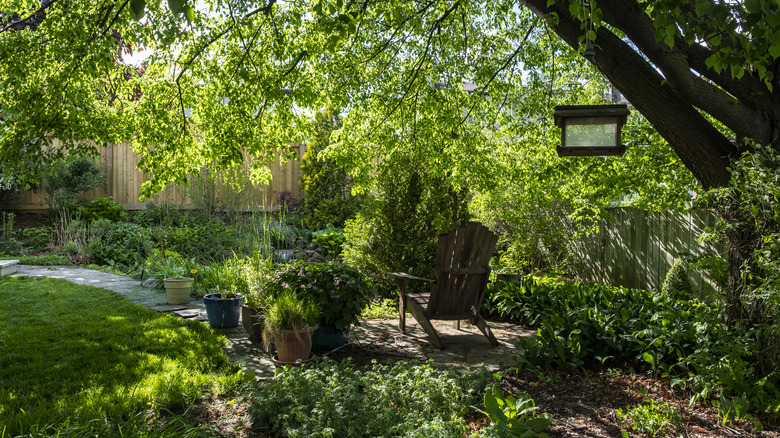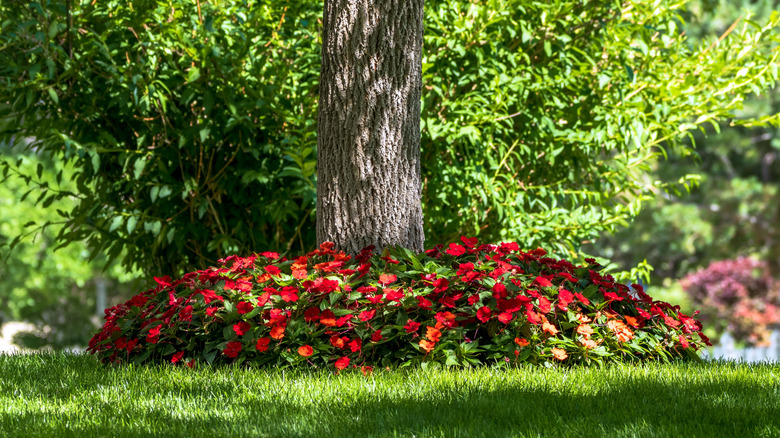The Fast-Growing Flower That Thrives In Shade And Is Perfect For Beginner Gardeners
Choosing the right plants for your shade garden can be tough, especially if you're a beginner gardener. And if you're hoping to break up the greenery of other shade-loving plants with a showy flower garden, the options get even slimmer. But it's easy to bring a splash of drama to a bed of ferns and hostas by planting impatiens (Impatiens walleriana). Known for showcasing continuous blooms, impatiens are a low-maintenance option to bring warm, sunny color to your shadiest spots.
Hardy in USDA Hardiness Zones 10 through 12, impatiens are a commonly sold as annuals and often found at local garden centers. Bright, round petals comprise the flattened blooms, bordered by dark green leaves with a bronze hue. But it's what comes after the buds fade that led to the naming of this popular plant — at the slightest touch, impatiens' small, pointed-oval seed pods burst open impatiently, scattering tiny brown seeds in every direction. This process of self-seeding makes impatiens a vigorous grower in frost-free climates, allowing it to spread easily into a sprawling ground cover.
Earning nicknames like "Touch-Me-Nots" and "Busy Lizzies" for their spontaneous seed ejection and spreading habit, impatiens are one of the most-used annuals in America. Hybridization has led to the creation of hundreds of different cultivars, featuring blooms from white, red, and purple to vivid bicolor. While it doesn't take much to maintain these shady superstars and grow a flourishing shade garden, here's everything you should know before planting impatiens.
How to maximize blooms and protect from disease
Impatiens thrive in shady conditions, but a little bit of sun can go a long way. Areas that receive 2 to 4 hours of sunlight, preferably in the morning, are ideal for maximizing blooms. Plants in full shade will still flower, but the display is often less robust. If the location is too sunny, your impatiens may have wilted buds or show signs of sun scald. To increase sun exposure during the morning and protect from harsh afternoon rays, consider planting your impatiens in a north-facing garden.
With maximum heights ranging from 6 to 24 inches, impatiens cultivars can be picky about spacing, so make sure to read the nursery label for the variety you choose. Plants placed closer together may stretch to reach the sun, resulting in a leggy appearance. To grow a thriving ground cover, space your plants about 8 to 12 inches apart. Clip young stems low to encourage bush-like growth. Trimming spent flowers, a process called deadheading, also helps encourage more blooms.
Planting your impatiens farther apart can also help prevent diseases like downy mildew, a fungus that travels by spore and can easily spread across the water-soaked leaves of overcrowded plants. Early detection is key to preserving your impatiens health; at the first sign of damage, remove infected plants and treat the area with fungicide. Certain cultivars, such as 'Beacon' impatiens, have a higher resilience to downy mildew, making them increasingly popular in wet regions.

